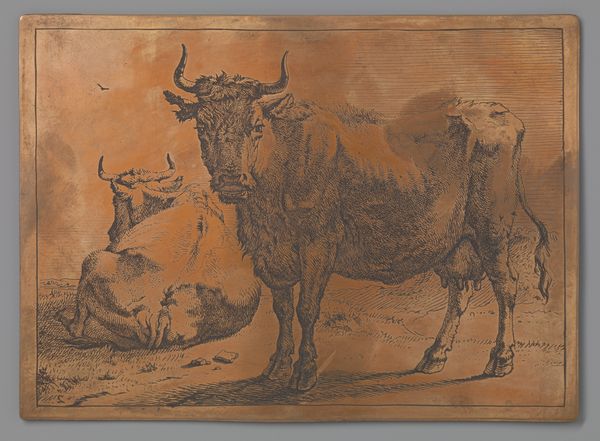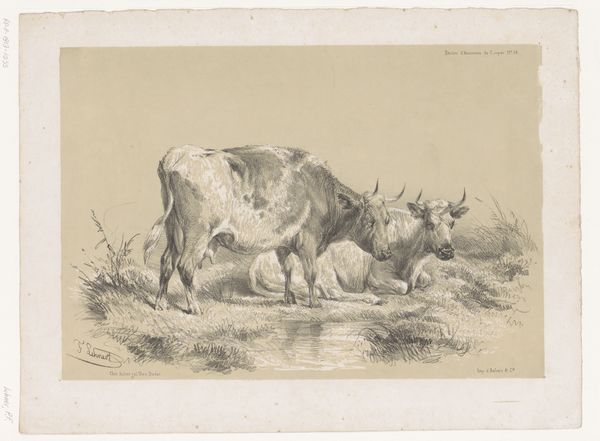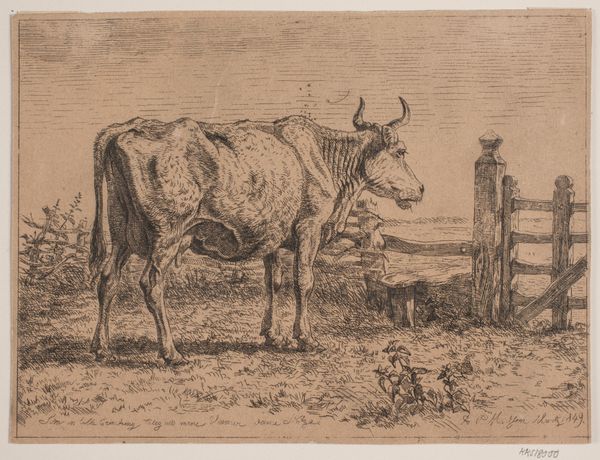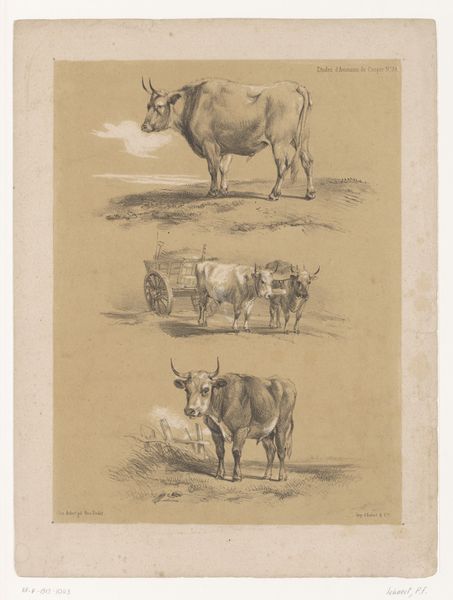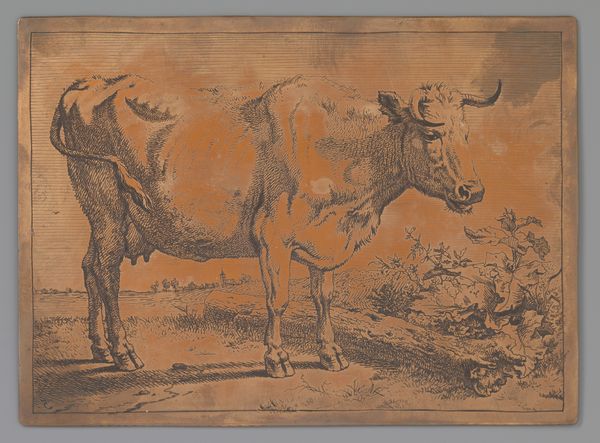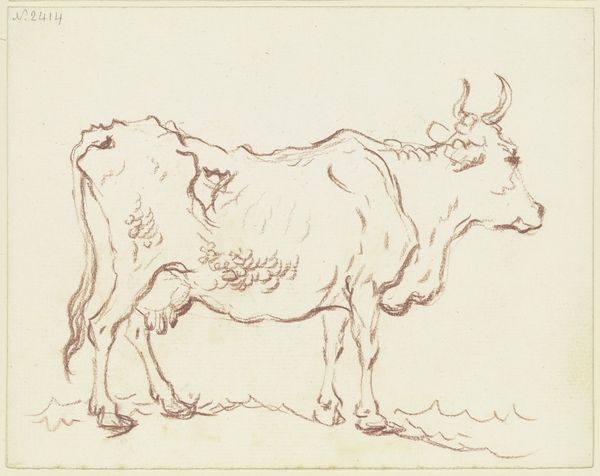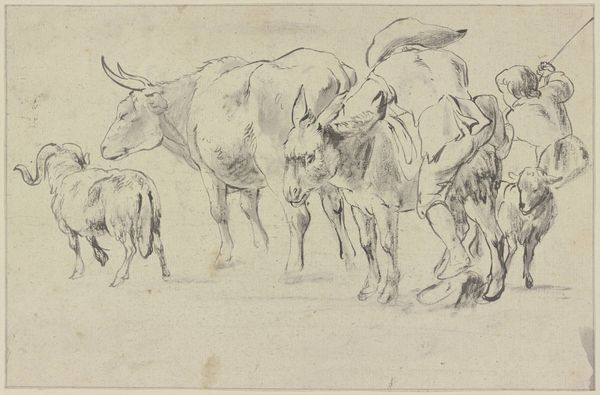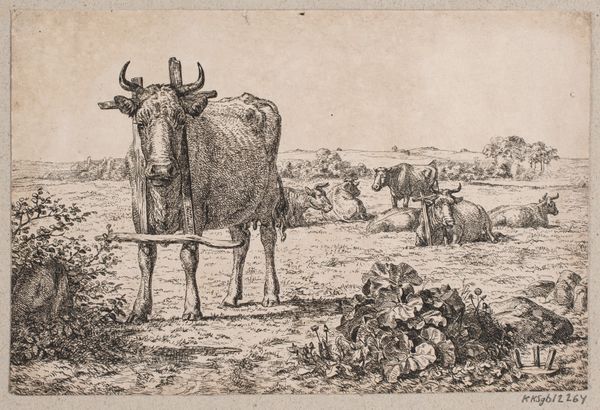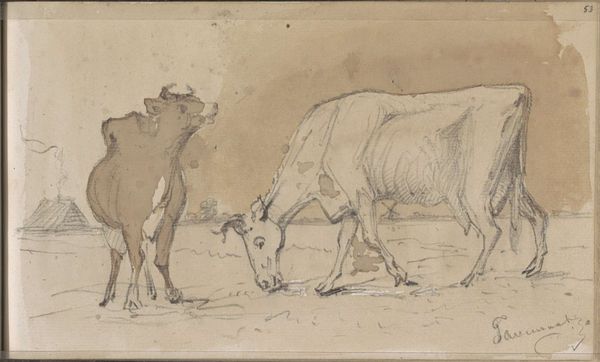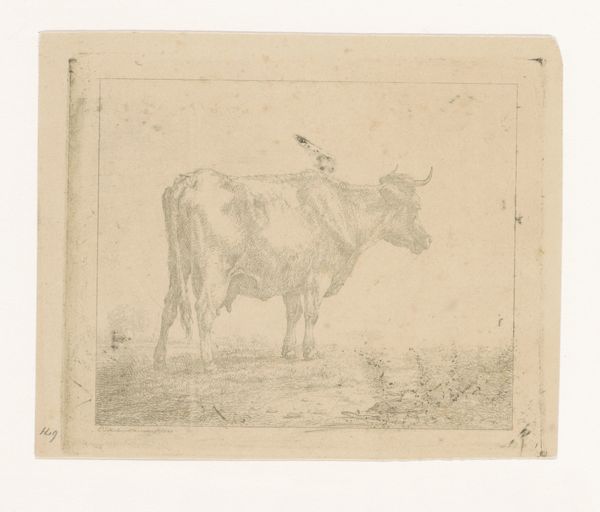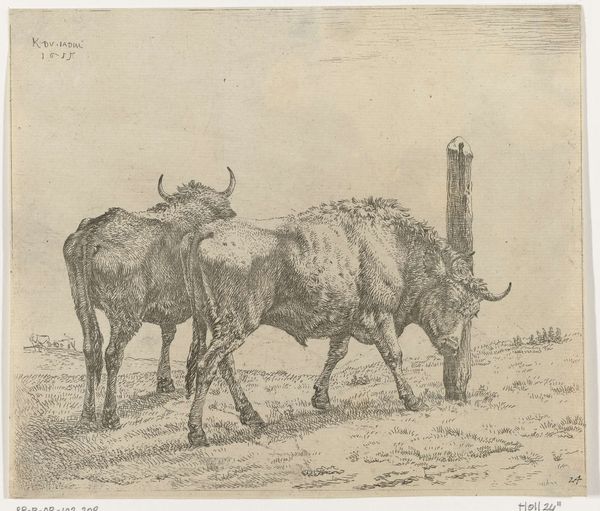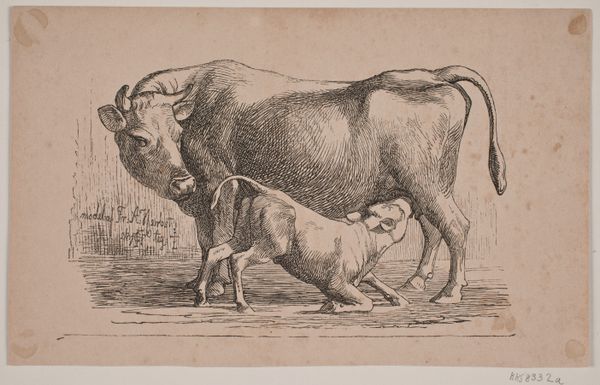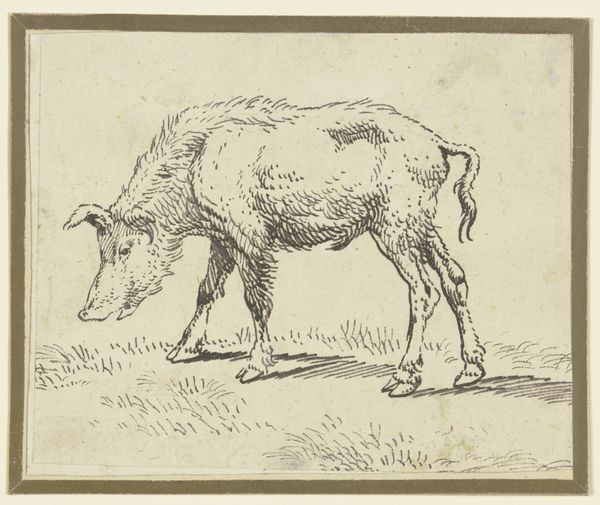
etching
#
narrative-art
#
animal
#
dutch-golden-age
#
etching
#
landscape
#
figuration
#
genre-painting
#
realism
Dimensions: height 112 mm, width 148 mm
Copyright: Rijks Museum: Open Domain
Paulus Potter made this etching, Pissende Koe, which translates to Pissing Cow, sometime in the mid-17th century. With the help of metal plates, acid, and printing press technology, Potter was able to create multiple impressions of this artwork. The etching is defined by the lines incised into the metal plate; these hold the ink and create the image when pressed onto paper. The brown hue comes from the ink used, its tone and density varied to create depth and shadow. Notice how the detailed rendering brings the animals to life, emphasizing their mass and texture. Prints like these were crucial to the rise of a visual culture that was aligned to the increasingly powerful merchant class. By capturing scenes of everyday life, including livestock, Potter reflects the Netherlands’ economic prosperity and a fascination with its own industriousness. The artwork's significance lies in how Potter uses technique to elevate the mundane, inviting us to appreciate the labor and natural resources that underpinned Dutch society. This print challenges traditional distinctions between genres, blurring the lines between fine art and depictions of everyday labor.
Comments
No comments
Be the first to comment and join the conversation on the ultimate creative platform.
